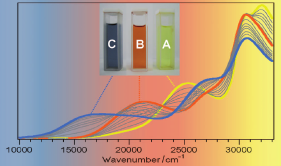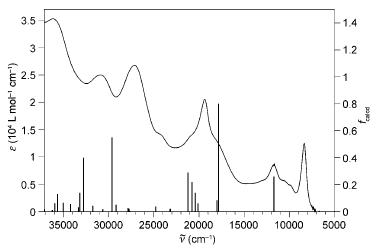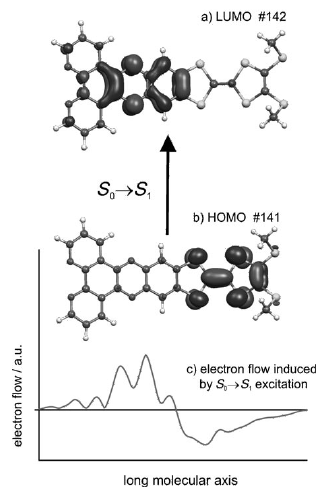-
A Pt(II) complex with both a phenanthroline and a tetrathiafulvalene-extended dithiolate ligand: Synthesis, crystal structure, electro-chemical and spectroscopic properties

C. Jia, J. Ding, S.-X. Liu, G. Labat, A. Neels, A. Hauser and S. Decurtins
Polyhedron, 55 (2013), p87-91


DOI:10.1016/j.poly.2013.02.064 | unige:32100 | Article HTML | Article PDF

The reaction of 4,5-bis(2'-cyano-ethylsulfanyl)-4',5'-dipropylthiotetrathiafulvalene with [Pt(phen)Cl2] (phen = 1,10-phenanthroline) with CsOH as base in CH3OH–THF affords the target complex 1 in 44% yield. This complex crystallizes in the monoclinic space group P21/c, M = 790.01, a = 12.1732(12), b = 15.851(2), c = 14.5371(16) Å, b = 107.693(12)˚, V = 2672.4(5) Å3 and Z = 4. It undergoes two reversible single-electron oxidation and two irreversible reduction processes. An intense electronic absorption band at 15200 cm-1 (658 nm) in CH2Cl2 is assigned to the intramolecular mixed metal/ligand-to-ligand charge transfer (LLCT) from a tetrathiafulvalene-extended dithiolate-based HOMO to a phenanthroline-based LUMO. This band shifts hypsochromically with increasing solvent polarity. Systematic changes in the optical spectra upon oxidation allow precise tuning of the oxidation states of 1 and reversible control over its optical properties. Irradiation of 1 at 15625 cm-1 (640 nm) in glassy solution below 150 K results in emission from the 3LLCT excited state.



